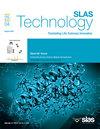High-throughput differential scanning fluorimetry (DSF) and cellular thermal shift assays (CETSA): Shifting from manual to automated screening
IF 2.5
4区 医学
Q3 BIOCHEMICAL RESEARCH METHODS
引用次数: 1
Abstract
Biophysical affinity screening is increasingly being adopted as a high-throughput hit finding technique in drug discovery. Automation is highly beneficial to high-throughput screening (HTS) since a large number of compounds need to be reproducibly tested against a biological target. Herein, we describe how we have automated two biophysical affinity screening methods that rely on a thermal shift in protein melting temperature upon small molecule binding: differential scanning fluorimetry (DSF) and the cellular thermal shift assay (CETSA).
高通量差示扫描荧光测定法(DSF)和细胞热转移测定法(CETSA):从人工筛选转向自动筛选
生物物理亲和筛选作为一种高通量的药物发现技术,正越来越多地被采用。自动化对高通量筛选(HTS)非常有益,因为大量化合物需要针对生物靶标进行重复性测试。在这里,我们描述了我们如何自动化两种生物物理亲和筛选方法,这些方法依赖于小分子结合时蛋白质熔化温度的热移:差示扫描荧光法(DSF)和细胞热移测定法(CETSA)。
本文章由计算机程序翻译,如有差异,请以英文原文为准。
求助全文
约1分钟内获得全文
求助全文
来源期刊

SLAS Technology
Computer Science-Computer Science Applications
CiteScore
6.30
自引率
7.40%
发文量
47
审稿时长
106 days
期刊介绍:
SLAS Technology emphasizes scientific and technical advances that enable and improve life sciences research and development; drug-delivery; diagnostics; biomedical and molecular imaging; and personalized and precision medicine. This includes high-throughput and other laboratory automation technologies; micro/nanotechnologies; analytical, separation and quantitative techniques; synthetic chemistry and biology; informatics (data analysis, statistics, bio, genomic and chemoinformatics); and more.
文献相关原料
| 公司名称 | 产品信息 | 采购帮参考价格 |
|---|
 求助内容:
求助内容: 应助结果提醒方式:
应助结果提醒方式:


